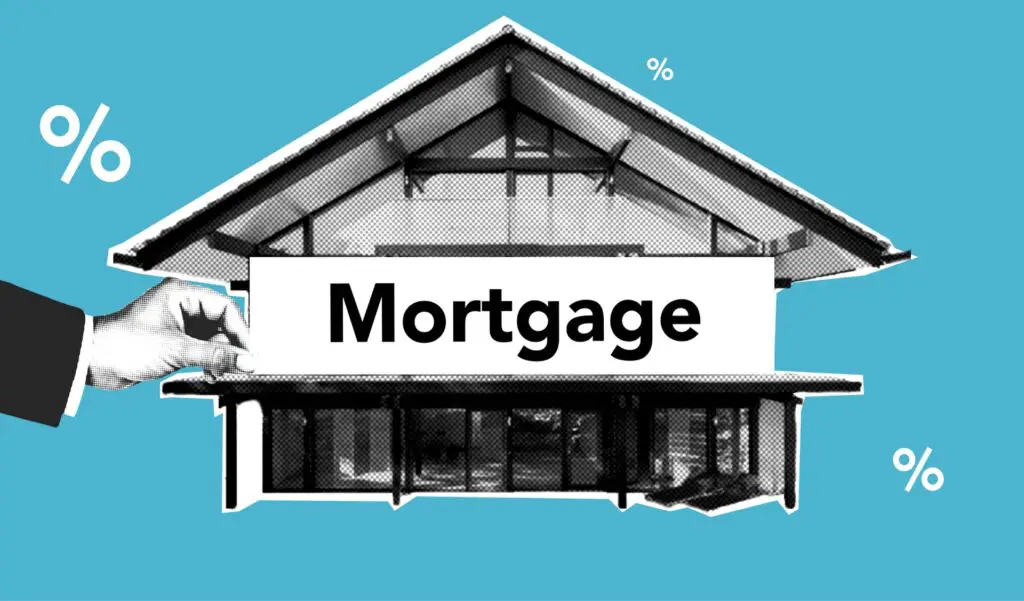Physical Address
304 North Cardinal St.
Dorchester Center, MA 02124
Physical Address
304 North Cardinal St.
Dorchester Center, MA 02124
A mortgage is a loan used to purchase real estate, with the property acting as collateral. The mortgage rate and interest are key components that determine the cost of borrowing and monthly payments for homebuyers. Understanding how mortgage rates and interest work together can help borrowers make informed decisions when financing a home.

The mortgage rate is the interest rate charged on a mortgage loan. It is expressed as an annual percentage rate (APR) that indicates the total cost of borrowing over the full term of the loan.
For example, a mortgage with a rate of 7.5% means the lender is charging 7.5% interest per year on the outstanding loan balance. This rate stays consistent throughout the life of a fixed-rate mortgage.
Mortgage interest is the amount of interest charged by a lender for borrowing the principal loan amount. It is calculated as a percentage of the loan balance.
The initial mortgage balance includes the borrowed amount plus any upfront fees and costs. As monthly payments are made, the principal is reduced and less interest accrues each month.
Over the full loan term, the total interest paid will depend on the loan amount, mortgage rate, and length of the repayment period.
Mortgage rates and interest are directly related – the higher the rate, the more interest paid over time. The loan type also impacts this relationship.
In a fixed-rate mortgage, the interest rate stays the same for the full loan term, typically 15 or 30 years. With a rate of 7.5%, the monthly principal and interest payment on a $400,000 loan is $2,720 [1]. This payment is fixed even as interest rates fluctuate.
An adjustable-rate mortgage (ARM) has an interest rate that changes periodically based on market conditions. ARMs often offer lower initial rates than fixed mortgages, making the monthly payment more affordable at first.
With an interest-only mortgage, payments cover only the monthly interest due for an initial period, typically 5 or 10 years. The principal balance remains unchanged, so the monthly payment is lower. After the interest-only period, principal and interest payments are required.
These loans allow paying less than the required interest payment. The unpaid interest gets added to the balance, increasing the total amount owed – a process called negative amortization.
This type of mortgage has relatively low payments for an initial term, but requires a large final “balloon payment” to pay off the balance. Borrowers can refinance or sell the home to make the balloon payment.
In each case, the specific mortgage rate influences the total interest costs over the life of the loan.
Many factors affect the mortgage rates lenders offer to individual borrowers.
Borrowers with higher credit scores are seen as lower risk and qualify for lower interest rates. The [average approved mortgage credit score is 714] [2]. Each incremental increase in score can save thousands of dollars in interest over the loan term.
The LTV compares the loan amount to the appraised home value. A lower LTV signals lower risk, as the borrower has more equity invested. Typically lenders require at least a 20% down payment to qualify for the best rates.
The DTI measures total monthly debt payments relative to gross monthly income. Lower DTIs represent better ability to manage mortgage payments, resulting in improved rate offers.
In general, larger mortgage amounts come with slightly higher interest rates. Jumbo loans exceeding conforming limits also have elevated rates.
Fixed mortgages for 15 or 30 years have higher rates than adjustable loans. Shorter loan terms usually have lower rates.
When the economy is strong, demand for mortgages increases, and lenders can charge higher rates while retaining low lending risks.
Actions by the Federal Reserve impact interest rates economy-wide. Raising the federal funds rate typically results in higher mortgage rates.
With high inflation, lenders increase rates to compensate for the decreased purchasing power of future repayments.
Accelerating economic growth signals a healthy economy, allowing lenders to offer lower rates. Slow growth leads to concerns of a potential recession and higher rates.
In a sellers’ market with low housing inventory, buyers compete for limited homes and sellers require financing contingencies. Lenders can offer lower rates to attract more borrowers. In a buyers’ market, rates tend to rise.
Market factors cause rates and costs to fluctuate daily. Individual circumstances also significantly sway pricing.
While market conditions play a key role, borrowers can take steps to improve mortgage offers:
A [higher credit score] can make a difference of 0.25 percentage points or more in rate [3]. Pay down debts, make timely payments, and limit new credit inquiries.
A down payment above 20% avoids private mortgage insurance and demonstrates ability to accumulate savings. The [average down payment is around 6.5%] [4].
Compare multiple lender quotes to find the most competitive pricing. Online marketplaces can streamline rate shopping.
Adjustable rates and shorter terms often have lower pricing. But carefully weigh the risks and long-term costs.
Monitor market forecasts and lock in a rate when indicators point to rising rates. But avoid locking too far in advance.
Mortgage rates fluctuate daily and have risen sharply over the past year:
Higher mortgage rates make purchasing a home less affordable, slowing home sales. But homeowners with existing low, fixed rates are sitting on significant equity gains from rising home prices [7].
Many interconnected factors cause rates to move up or down:
Many factors influence rate changes. Understanding what drives movement can help buyers time their home purchase and lock in the best rate.
Mortgage rates directly impact the interest costs and monthly payments on a home loan. While economic conditions drive market rate fluctuations, individual borrowers can improve their position by taking strategic steps with credit scores, down payments, and shopping lenders. Maintaining awareness of market forecasts allows locking in competitive rates at the optimal time. With patience and preparation, homebuyers can secure favorable long-term financing.